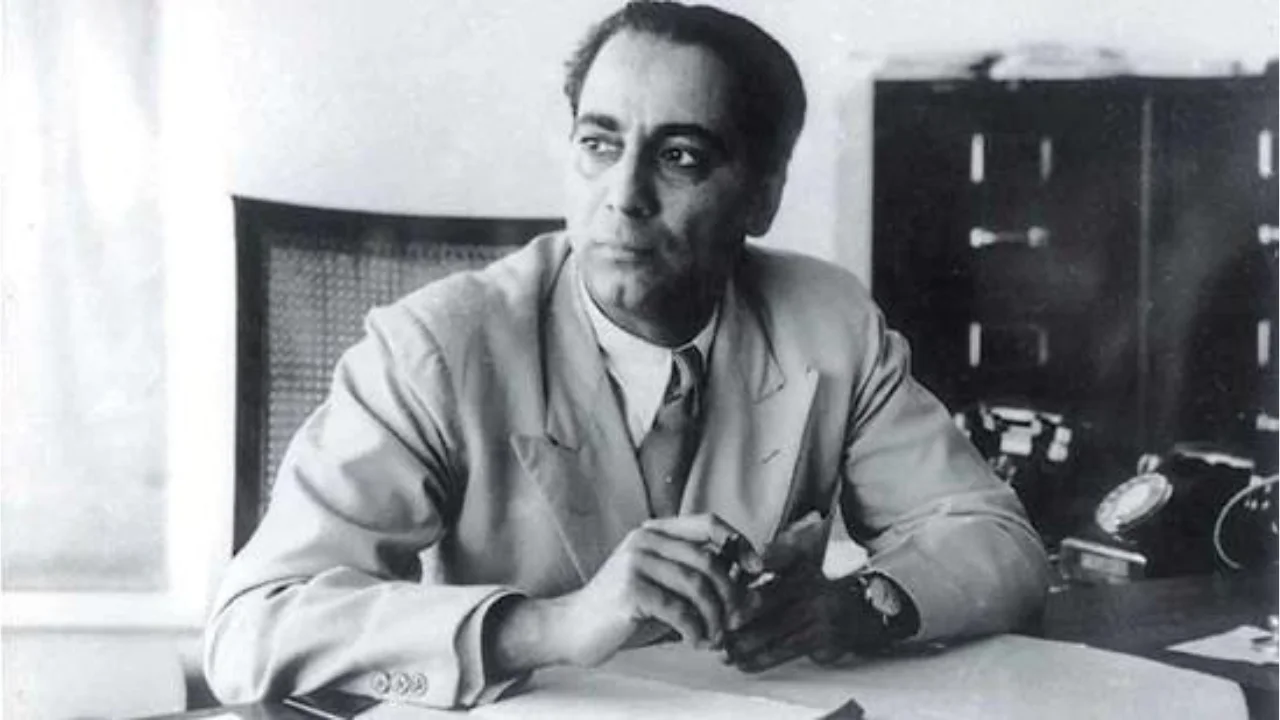Dr. Homi Jehangir Bhabha Birth Anniversary 2024
Dr. Homi Jehangir Bhabha, the “Father of the Indian Nuclear Programme”, was born on October 30, 1909, in Mumbai. He was a brilliant physicist and a visionary leader who played a pivotal role in shaping India’s scientific and technological landscape.
About Dr. Homi Jehangir Bhabha
Dr. Homi Jehangir Bhabha (1909-1966) was an Indian nuclear physicist who is widely credited as the “Father of the Indian Nuclear Programme”. He was the founding director of the Tata Institute of Fundamental Research (TIFR) in Mumbai and the founding chairman of the Atomic Energy Commission of India.
Birth & Education
Bhabha was born into a wealthy Parsi family in Bombay (now Mumbai). He received his education at the Cathedral and John Connon School in Mumbai and the Royal Institute of Science in Bangalore. He then went on to study at the Cavendish Laboratory at the University of Cambridge, where he worked under the renowned physicist Ernest Rutherford.
At Cambridge, Bhabha made significant contributions to the field of nuclear physics. He is best known for his work on the Bhabha scattering, a process in which two photons interact with each other. He also developed the theory of the cascade process, which explains how cosmic rays are absorbed in the atmosphere.
Return to India
After returning to India in 1945, Bhabha established the Tata Institute of Fundamental Research (TIFR) in Mumbai. TIFR quickly became one of the leading centers for nuclear research in India. Bhabha also played a key role in the establishment of the Atomic Energy Establishment, Trombay (AEET), which was later renamed the Bhabha Atomic Research Centre (BARC).
Under Bhabha’s leadership, India made rapid progress in the field of nuclear energy. In 1956, India’s first nuclear reactor, Apsara, was commissioned at Trombay. This was followed by the commissioning of the CIRUS reactor in 1960.
Bhabha was also a strong advocate for the peaceful use of nuclear energy. He was the architect of India’s three-stage nuclear power program, which aimed to develop nuclear power reactors based on indigenous resources.
Tragic Death
Bhabha died tragically in a plane crash in 1966 at the age of 56. His death was a major setback for India’s nuclear program. However, his vision and legacy continue to inspire scientists and engineers working in the field today.
Contributions of Dr. Homi Bhabha
Dr. Homi Jehangir Bhabha made significant contributions to Indian science and technology, particularly in the field of nuclear energy. He is widely credited as the “Father of the Indian Nuclear Programme”.
- Established the Tata Institute of Fundamental Research (TIFR): TIFR is one of the leading centers for nuclear research in India. It was established by Bhabha in 1945, and it has played a pivotal role in developing India’s nuclear capabilities.
- Established the Atomic Energy Establishment, Trombay (AEET): The AEET, which was later renamed the Bhabha Atomic Research Centre (BARC), is India’s premier nuclear research facility. It was established by Bhabha in 1954, and it has played a key role in developing India’s nuclear power program.
- Developed India’s three-stage nuclear power program. Bhabha developed India’s three-stage nuclear power program, which aimed to develop nuclear power reactors based on indigenous resources. The three stages are:
- Stage 1: Pressurized heavy water reactors (PHWRs) fueled by natural uranium
- Stage 2: Fast breeder reactors (FBRs) fueled by plutonium
- Stage 3: Thorium-based reactors
- Advocated for the peaceful use of nuclear energy: Bhabha was a strong advocate for the peaceful use of nuclear energy. He believed that nuclear energy could be used to improve the lives of millions of people in India by providing them with electricity, healthcare, and other essential services.
Major Achievements of Dr. Homi Bhabha
- Developing the theory of Bhabha scattering, a process in which two photons interact with each other.
- Developing the theory of the cascade process, which explains how cosmic rays are absorbed in the atmosphere.
- Making significant contributions to the field of quantum electrodynamics.
- In 1956, India’s first nuclear reactor, Apsara, was commissioned at Trombay under Bhabha’s leadership.
- In 1960, India’s second nuclear reactor, CIRUS, was commissioned at Trombay.
- In 1964, Bhabha played a key role in the establishment of the Tarapur Atomic Power Station, India’s first commercial nuclear power plant.
- Bhabha also played a key role in the development of India’s space program. He was the chairman of the Indian National Committee for Space Research (INCOSPAR), which was established in 1962.
Bhabha was a true visionary and a pioneer in the field of science and technology. His major achievements helped to lay the foundation for India’s success in these areas.
30th October 2024 Special Day
On October 30, 2024, we commemorate the birth anniversary of Dr. Homi Jehangir Bhabha, hailed as the “Father of the Indian Nuclear Programme.” Born in Mumbai in 1909, Dr. Bhabha was not only a brilliant physicist but also a visionary leader. His indelible contributions played a pivotal role in shaping India’s scientific and technological landscape, leaving an enduring legacy that continues to inspire generations in the realms of nuclear science and national development.
- RBI Grade B Notification 2024, Download RBI Notification PDF
- Daily Current Affairs for RBI, SEBI, NABARD & IFSCA, Get PDFs
- RBI Grade B Syllabus 2024 and Latest Exam Pattern, Phase 1, 2
- International Museum Day 2024, Its History & Significance
- World AIDS Vaccine Day 2024, History, Importance & How to Celebrate
- World Hypertension Day 2024 (17th May), Theme & History

Oliveboard Live Courses & Mock Test Series
- Download IFSCA Grade A PYQs
- Download SEBI Grade A PYQs
- Download SEBI Grade A 300+ MCQs
- Download 500+ Free Ebooks for Govt. Exams Preparations
- Attempt Free SSC CGL Mock Test 2024
- Attempt Free IBPS Mock Test 2024
- Attempt Free SSC CHSL Mock Test 2024
- Download Oliveboard App
- Follow Us on Google News for Latest Update
- Join Telegram Group for Latest Govt Jobs Update







